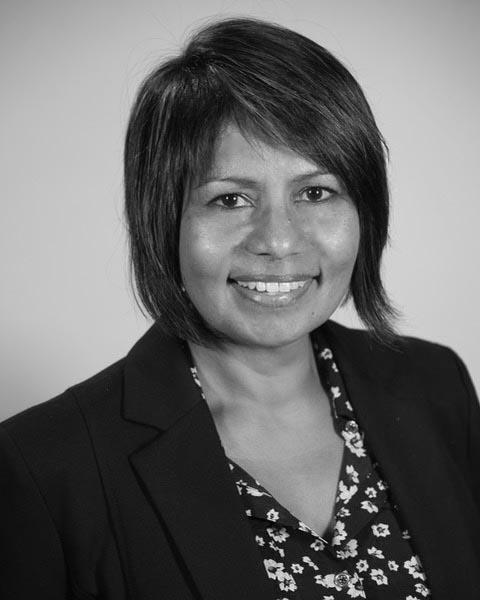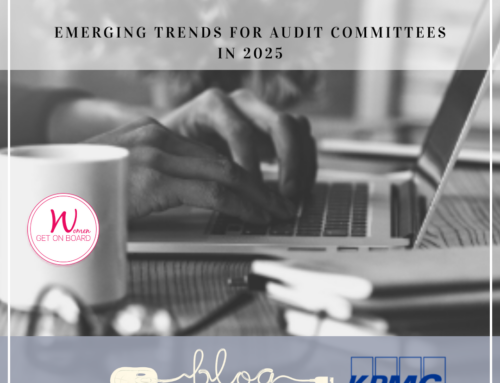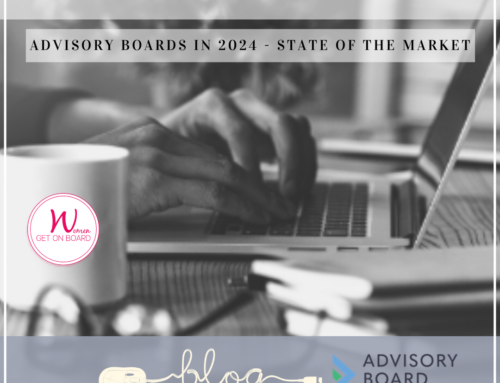
Margie Parikh moderated WGOB’s “Disruption and Transformation – The Board’s Role in Overseeing Opportunities and Risk” panel on April 16, 2018 in Vancouver. The event was hosted by WGOB’s National Strategic Partner, KPMG LLP. – bit.ly/EAPR162018
Tell me about your Board journey. Why did you start on the path towards governance?
It wasn’t until I was in my 40s that I realized that I really loved doing board work. I’d worked in international strategy and marketing for a decade, and personal finance. It was an intentional move into governance, my “third career”.
I am told I am good at listening, thinking strategically, summarizing and cutting to the chase. But it takes work…through education and board experience I believe that intentional leadership makes a difference. A good board can really impact the success of the organization. I’m told I’m good at bringing out the best in a board and a leadership team.
What’s intentional leadership?
Start with the belief that it makes a difference – being intentional about bringing out the best in people. If you’re a Chair you must be purposeful in bringing out good leadership and director qualities, understanding the organization and what it means to lead the organization. It’s more active than passive.
An example – I was Chair of an organization where we had a board dynamics challenge. In that particular situation, I put a ton effort into monitoring those dynamics. Between meetings I worked hard to ensure that each person really understood what was at stake, the options, and made sure they were comfortable in voicing their thoughts. It was an intentional focus on the dynamics, the background facts, and people’s needs. When I see the results that came from this kind of effort, then I understood that intentional focus makes a difference.
How do you feel about the rising focus on Board credentials in the context of achieving diversity? The board programs are so expensive that that they can exclude non-traditional candidates.
I’ve worked with excellent directors who don’t have credentials and some lousy directors who do. The programs are good – if you are ready for them – but they’re only one part of the development of a director. An organization has some responsibility to provide opportunities for learning, but so do you as a director. For sure many courses are out of reach – but there are also some excellent free resources. The challenge is curating the information and distilling it down.
So what are the key skills you look for in a director?
Credentials might be an indicator of someone’s interest in being a director, but don’t confuse that with a commitment to being a good director. A course may be an easy option for some people who might have the notion that being on a board is easy and lucrative and they’ll be instantly qualified. I wouldn’t presume that means they’re genuinely interested in governance or in the organization.
Key skills include being a good listener and being open to other points of view. These are talked about a lot because they’re bang on. You need to be inherently curious and ask questions, and be courageous when you see something that doesn’t feel right.
How do you champion diversity on a board that says, “We have limited size. We can’t meet diversity targets if we want the best candidates”?
That statement presumes that by adding diversity you are not getting boardroom skills. I would say, (I would yell, in fact…) “look around!” There are lots of bright, skilled people with diverse backgrounds and great board skills. You may not be looking in the right places. Today we have the Internet and organizations like WGOB, The Directors College, and the ICD where you can access thousands of qualified people who bring all kinds of diversity to boards. If you can’t find them – sorry to be blunt – but you’re just not looking in the right places.
We do need to engage the board on the topic. It’s part of the Chair’s role and part of the role of the nominating and governance committee. Pressure to increase diversity sure helps, but the research and the results are our best allies.
How do you feel about legislated diversity targets?
I would rather not go there. I’d rather continue the pressure for requirement and reporting. The pressure to report gets the ball rolling, albeit far too slowly. Then, I truly believe, the value of diversity becomes obvious, and organizations won’t regret it. They will see results.
Transparency, reporting on the things that matter–whether you’ve done well or even if you’re doing poorly–forces your leadership team to pay attention. It also builds trust in your organization and enhances your brand. Reputational risk is increasingly important in the age of social media and everything happening real time. People care about diversity, and the trust you are building with members and shareholder by being upfront on your progress can’t be under-emphasized.
Can you give me a practical example of a situation where board diversity made a difference?
Once we were presented with a financial decision that could take us into a serious deficit. The instinct at the table was to do X, which was the legal minimum. In the past we had done more than X, so we had gone beyond what we were legally required to do. But when times were tough we went back to the minimum, ensuring compliance. From an audit perspective, that might be appropriate.
However, when we got to the Board table I wanted to discuss the bigger picture: our stated values and mission. I thought, what do those values mean to the Board? When push comes to shove we seem to be wiling to let them go. So how do we set priorities and direction, especially in difficult times, when we are not in alignment, or perhaps even agreement, on these fundamentals?
The funny thing is we had never really had this kind of discussion….how the values guide our decisions. The organization believed it really was mission and vision driven – it says so on the wall plaque, right? But is #1 bullet more important than #2, which is more than #3? That’s what diversity brings. A range of varied thinking; the courage and expectation of frank but respectful surfacing of thoughts. In this case that resulted in the Board looking at what those values mean and better quantifying risk appetite, so we are better equipped to deal with challenging situations in the future.





